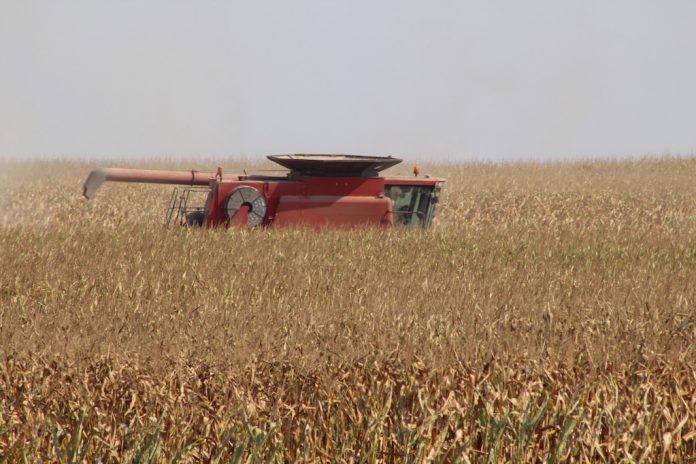More rainfall in Ohio and much of the Eastern corn belt region has contributed to issues like algal blooms in Lake Erie from farmland runoff, and more challenges for farmers getting into their fields in the spring and fall to plant and do other field work.
Ohio State University researchers are trying to get a better sense of how farmers are adapting to these changing weather patterns with their Agroecosystem Resilience Project.
“Across the board, I think we’re hoping that we’ll better understand what climate change means for the Eastern corn belt,” said Robyn Wilson, professor of risk analysis and decision science for Ohio State University’s School of Environment and Natural Resources, and the project leader.
They are also looking at how different policies could help farmers make changes to be more resilient to climate change, and what policies and farmers’ decisions could mean for the future of ecosystems and economies in the region.
The project, which launched in 2019 and will wrap up in 2023, aims to help policymakers understand how they can best help farmers and other sectors of the region adapt to climate change.
“It’s one thing to say it’s going to be wetter … it’s another to say, [for example], five out of every 10 years, half of the farmers won’t be able to plant their crop, and economically, that means ‘X’ amount of decrease,” Wilson said. “We’re trying to make those connections for people.”
Adapting
One of the big components of the project is looking at how farmers are responding to changing weather conditions.
“I think the biggest thing farmers seem to be worried about, and seem to be responding to, is too much rain,” Wilson said.
The last few years, especially 2019, have brought a lot of challenges with planting because of the amount of rain Ohio has been getting in the spring. Some farmers have responded to the rain by putting in more drainage tile, so their fields dry out quickly and they can get into the fields sooner. But at the same time, it’s important to consider the other impacts that response could have.
“It’s always about trade-offs,” said Elena Irwin, professor of food, agricultural, and environmental sciences in economics and sustainability for Ohio State’s Department of Agricultural, Environmental and Development Economics. “We’ve got to find out what the right balance is.”
It’s important for farmers to be able to get water off of their fields so they can plant and do other field work. But big runoff events from rainstorms are part of what’s been driving harmful algal blooms in Lake Erie. If the water leaves farm fields even more quickly, it could contribute to more water quality issues.
“We not only have to support farmers in being creative about getting into the fields in the spring, but also incentivizing and providing support for edge-of-field practices that help trap and remove nutrients from water,” Wilson said.
Things like wetlands, edge-of-field filter strips and two-stage ditches — which Ohio just added as a best management practice to the H2Ohio program — could help trap and remove those nutrients as the water leaves the fields.
Climate and agriculture
In addition to looking at resilience for farmers, researchers are looking at how farmland could help mitigate climate change through things like carbon sequestration.
“If we do want to take advantage of the incredible potential with land,” Irwin said. “How do we compensate or incentivize landowners … to engage in practices that are going to increase the carbon that gets stored?”
Legislators have looked at carbon markets as one way to encourage farmers to use practices that store more carbon in the soil. But it’s important to look not only at how different practices would affect carbon storage, but also at how farmers are likely to respond to different policies and programs around carbon markets.
“If you’re trying to achieve a big, broad policy goal, you can’t just naively throw out a policy and think that you’ll get there,” Irwin said. “You have to understand how people respond to it.”
Larger farms
In survey responses, researchers found that larger farms were more likely to be the ones adapting and making changes in response to climate change. That’s consistent with research that shows larger farms tend to adopt more conservation practices in general, Wilson said.
“Profit margins are wider on bigger farms,” she said. That means those farms may have more room in their budgets to try new practices, and may see more return on investments in equipment because of the economies of scale.
There are a couple of ways to think about that in terms of the future. Farms are typically getting bigger, and there are less of them.
“If farms are bigger, and bigger farms can do these things, that’s good, but you also could argue the opposite — we don’t want small farms to disappear,” Wilson said. “Policymakers have to think about both … it’s easier for most farms to do this, but in the same vein, is that ethically okay? Are we okay with adding reasons why small farms can’t survive?”
If policymakers want small farms to have a better chance at sticking around, they will need to find ways to support smaller farms in adapting to changing weather patterns.
Final stages
In the last stages of the project, the researchers are combining their work on climate models, farmer surveys and behavior, models for watersheds and a regional economic model to look at some possible future scenarios for the region.
Those scenarios will include agricultural production, water quality, the economy and more, and will also include policies that could help lead towards the best outcomes for the region. Some of the possible factors they may look at include higher or lower commodity prices, more or less conservation funding and carbon taxes or other regulations or incentives.
“Let’s imagine things we could do to solve the problem, and look at how that might change other things,” Wilson said.










